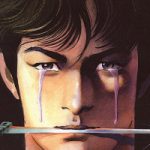Tank Girl
Regions: UK

First published in 1988, Tank Girl is a British comic series whose influences as a post-punk cult phenomenon and as an international franchise exemplify the cultural impact English-language comics have had on fashion styles, publishing trends, as well as commercialization through Hollywood adaptation and gender politics relating to female characters as action heroines.
Designed and storied by Jamie Hewlett and Alan Martin, Tank Girl first appeared as a comic strip in the music and style magazine Deadline. Not only did the design of Tank Girl as a shaven headed, tank-driving, anti-heroine toting heavy weaponry in a bra and hot pants with boots embody a post-punk visual aesthetic. But combined with a post-apocalyptic Australian outback setting populated with mutant kangaroos, Tank Girl offered British readers a dystopic reimagining of the Australianness exported to the UK by the Mad Max movies, Crocodile Dundee (1986) and soap operas. The iconoclastic anti-authoritarian antics of Tank Girl’s misadventures, body humour, drunkenness and open sexual relationship with Booga, a mutant kangaroo – all rendered in black and white through splash pages and anarchic layouts – attracted a strong following, especially among female readers. Tank Girl’s popularity made it the flagship comic for Deadline’s alternative and independent music profiling, underground fashion stylings, and British pop-cultural referencing. Fashioned into a protest icon for the lesbian community in the late-1980s, by the early 1990s Tank Girl morphed into an international corporate “bad girl” fashion icon with fashion models dressed as Tank Girl selling Wrangler Jeans and as magazine cover shots for Elle, Vogue and The Face. The film adaptation of Tank Girl (1995), directed by Rachel Talalay, and released the same year as other major studio films based on comic properties, including Batman, Judge Dredd and Casper, was a commercial and critical failure.
The original Deadline series has been reprinted by a number of British and American publishers including Penguin (1990), Dark Horse Comics (1991) and Titan Books (2009) as well as undergoing reinvention by different writers and artists, including a follow-up series and a movie adaptation, all published by DC Comics’ Vertigo imprint. Since 2007 co-creator Martin and artists Ashley Wood and Rufus Dayglo have reincarnated Tank Girl across different formats and publication outlets such as Judge Dredd: The Megazine and with different publishers including Image Comics, IDW Publishing and Titan Comics. In 2014, Hewlett and Martin reunited for a Kickstarter campaign to crowdfund over £ 174,000 (US$350,000) to produce the comic 21st Century Tank Girl. The completed mini-series involving artwork from past Tank Girl artists as well as new comic artists was serialised by Titan Comics in 2015.
With the release of Mad Max: Fury Road (2015), Internet-based comparisons of the film’s lead female character with the Mad Max-inspired Tank Girl reprised debates from the 1990s over female identification with Tank Girl as a male-created figure of “bad-girl” empowerment. Likewise, online speculation in late 2014 over Wonder Woman becoming the first female-fronted superhero movie to be directed by a woman repeatedly singled out Rachel Talalay as only one of two women ever to direct a film version of a comic property.
— Jason Davis
Further Reading
- Chapman, James. British Comics: A Critical History. London: Reaktion Books. 2011. Print.
- Vogler, Thomas A. “James Joyce Meets Tank Girl,” in Cultural Studies of James Joyce. Edited by R. Brandon Kershner, 189-212. Amsterdam: Rodopi. 2003. Print.
- Whelehan, Imelda and Esther Sonnet. “Regendered Reading: Tank Girl and Postmodernist Intertextuality,” in Trash Aesthetics: Popular Culture and It’s Audience. Edited by Deborah Cartmell, I.Q. Hunter, Heide Kaye and Imelda Whelehan, 31-47. London: Pluto Press. 1997. Print.


